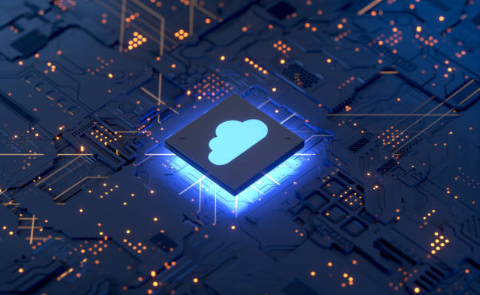In this article, we will try to learn more about the cloud, its benefits, its disadvantages and the best practices to adopt in order to benefit from it for data management.
Table of Contents
Data and the cloud, an introduction
For several years now, cloud computing has established itself as an important and lasting trend in the information technology landscape. Its development does not appear to be slowing, with analysts predicting sustained growth for at least the next decade.
The development of the cloud affects both individuals and businesses. With applications like Netflix, Dropbox, Google Drive but also Slack, Salesforce, Hubspot and many others, it is more fashionable than ever to use applications deployed in the cloud and store your own there. data.
However, should we follow the trend? You have no doubt already been praised the merits of the cloud for managing your company’s data: more flexibility, increased performance, reduced costs… But in fact, what is it really? Wouldn’t it be better to keep control of your data by storing it on your servers? And besides, where is your data once in the “cloud”?
Far from the ethereal vision that one can have of it, the cloud first corresponds to a material and technological reality that must be taken into consideration before considering putting your data there.
To ensure the proper management of your data in the cloud, there are a number of questions that must be asked; these concern both technical, economic and legal aspects. To begin with, we must come back to the definition itself, the word cloud being too often used indiscriminately.
What is cloud computing?
Cloud computing (also sometimes called “cloud computing” in France) aims to provide computing resources accessible anywhere and at any time via a terminal (smartphone, tablet, computer) connected to the Internet. These resources can be of various kinds: servers, storage, applications, services, etc. Thus, the cloud is not a technology strictly speaking but rather a set of technologies oriented towards the same goal: to provide IT resources on demand. Whether it’s Amazon Web Services, Microsoft Azure, or Google Cloud, cloud services share some common characteristics that allow them to be viewed as such.
The essential characteristics of the cloud
Self-service on demand
A user can access computer resources (storage, server usage time) automatically. Or, to put it another way, the resources are accessible without delay and without the need to interact with a human operator. Thus, for the user of the service, flexibility is total: he only pays for what he consumes, and can increase his capacity at any time.

Global access through the network
Thanks to standardized mechanisms, such as APIs, it is possible to access IT resources from heterogeneous terminals (smartphones, tablets, desktops or laptops), anywhere and at any time.
It is possible to access the computing resources of the cloud from various terminals: laptops, tablets, smartphones …
Pooling of resources
Cloud computing is based on a model of shared resources. Resources are shared among multiple users and are dynamically allocated to meet individual demand. Virtualization technologies allow each user’s data to be grouped together in a virtual machine, a sort of sealed bubble that cannot be accessed by other users.
Elasticity
The system automatically adjusts to withstand significant increases in load. The capacity of the system appears unlimited for users who can access the requested resources at any time.
Permanent control
Cloud computing systems continuously measure the use of resources to optimize their operation. The cloud provider and the user can know the resource usage at all times, which ensures a transparent use of the service.
Different types of resources can be provided by the cloud. These can include data storage, compute capacity, and applications, among others. Cloud services can be classified into three different categories depending on the nature of the IT resources provided.
The different service models
- Infrastructure as a Service (IaaS)
The service provider provides only the basic computing resources: computing power, storage, network… The user must install the operating system and the applications he wishes to use, but does not have to worry about the hardware infrastructure that is completely managed by the cloud provider. With IaaS, it is possible to recreate a complete corporate network environment with isolated subnets and firewalls. - Platform as a Service (PaaS)
The service provider takes care of the management of the IT infrastructure and basic software such as the operating system. By opting for PaaS, the customer benefits from a ready-to-use environment for the deployment of applications. - Software as a Service (SaaS)
The service provider provides access to an application deployed on a cloud infrastructure. The user does not have to worry about the underlying mechanisms that make the use of the application possible. The application is ready to use and is accessible via a web browser or a dedicated program. This is the case, for example, with applications such as Google Drive, Salesforce or Opendatasoft.
The different deployment models
It is also possible to classify cloud services according to the types of audiences that can access the service.
Private cloud
Cloud hardware infrastructure is dedicated for the exclusive use of an organization.
Public cloud
Cloud infrastructure can be used by anyone. The infrastructure can be owned and controlled by a commercial enterprise, a research organization, or even a government organization. Amazon Web Services or Microsoft Azure clouds are public clouds.
Sovereign cloud
It was not possible for us to ignore the sovereign cloud as it has gained in notoriety in recent times. This is not a deployment model but rather a sub-category of the public cloud. Typically French, the notion of sovereign cloud was clarified by the Ministry of the Interior and the Ministry of Culture in an information note signed in April 2016 and published in the Official Journal in June 2016. The sovereign cloud is defined there as a cloud which “allows […] to guarantee that all data is stored and processed on French territory”.
To summarize: the open data and Smart City solutions offered by Opendatasoft are SaaS solutions deployed in a public cloud.
Where is your data once in the cloud?
When you use the services of a cloud provider, the resources you access are in a data center (or “data center” in French). These installations bring together a large number of computer equipment, in particular servers, in the same place. They are connected to the Internet by very high speed connections.
Because of the way the cloud is designed, it is impossible to know exactly which physical machine in the data center is your data. On the other hand, as soon as you subscribe to the services of a cloud provider, you are required to choose a “region”. A region is made up of one or more data centers located in a given territory. Your resources will then be instantiated on the hardware hosted in the data centers of the chosen region.
Each region is independent and, unless you take a voluntary step, your data will not leave the region you have chosen. Thus, you keep control over the geographic area of residence of your data. For example, if you use the Amazon Web Services cloud and choose the “Europe (Frankfurt)” region, you can be sure that your data will not leave Germany.
When you use the cloud you access computing resources from a data center belonging to a given region.
We now have a clearer idea of what the cloud is. If it is used so much today, it is because it has a number of advantages over servers and applications deployed and managed internally. But the cloud also raises a number of data protection questions. Should we give up the benefits of the cloud to guarantee the security and confidentiality of our data?
What are the advantages of the cloud?
Simplified use
Whether it is computing power, storage space or applications, the cloud gives you access to the resources you need without even having to know the mechanisms that make their use. possible.
For example, if you are using a SaaS application, it does not matter to you the processor of the server on which the application is running, or even the operating system used. After subscribing, you can immediately use the app. Hardware and software matters are the responsibility of the service provider. You can focus on the heart of your business without having to deal with issues surrounding software deployment.
Managing data in the cloud: ask yourself the right questions
The cloud gives you access to the resources you want without needing to know the underlying technologies that make them work.
Lower costs
On the one hand, it is no longer necessary to make significant initial investments in infrastructure and software. In fact, with the cloud operating “as a Service” you pay a subscription which gives you access to the necessary resources. No need to invest heavily up front in hardware, such as servers. Thanks to the cloud, depreciation of your hardware is no longer a concern.
On the other hand, everything related to the maintenance of IT infrastructure is outsourced and taken care of by the cloud provider. In the case of SaaS, you won’t even have to worry about updating the software you use, which is handled by the service provider.
Increased flexibility
With the cloud, you only pay for what you use. Say you need storage space for your data. You can invest in an internally managed server knowing that the capacity of the server is unlikely to be fully utilized. Second solution, you can choose to use the cloud and request storage space for your data when you need it. Of course, the last solution will be the most efficient and the least expensive for you.
Moreover, with the cloud, it becomes very easy to change scale. Imagine this time that your business is growing rapidly and needs to quickly increase the storage space available to it. Responding to this problem by installing servers in-house would involve a significant financial cost and time. It is not only necessary to take into account the cost of the material and the cost per day / man for the installation but also the times of tendering, negotiation, order, installation… With the cloud you can increase practically instantaneously storage space at your disposal, and that without fixed costs.
Data backup and recovery
Cloud providers automatically replicate your data to several different locations ensuring that in the event of a hardware failure your data can easily be recovered. If you manage your data internally, you will need to remedy any hardware failures yourself.
Cloud vs. internal server: which is the most secure?
The question of security is probably the one that comes up most often when talking about the cloud. It is true that leaving it to a third party to keep your data and organize their protection can be doubtful. But should we ban the use of the cloud for the management of your company’s data? The answer is not that simple.
For cloud providers, data security is first and foremost essential to maintain the trust of their customers. Thus, many measures have been put in place to guarantee a high level of data security in the cloud. On the security side, the cloud has arguments that can tip the balance in its favor compared to IT resources managed internally.
On the one hand, the physical environment of the data centers in which your data is located is under strict control. It is unlikely that a malicious individual will have access to the computer hardware containing your data. Data centers are highly secure facilities with restricted access to authorized personnel. On site, security teams are on constant watch and video cameras are used to monitor the actions of those present. Complex air conditioning, power and fire protection systems ensure continuous operation of IT equipment even in the event of a hazard.
The physical environment of data centers is subject to very strict control.
On the other hand, your data is also protected against computer intrusions. Cloud providers employ large teams of experts to regularly monitor the security of their cloud platform. Most suppliers have certifications, such as ISO 27001 certification, which demonstrate compliance with very strict safety standards.
If the relevant cloud provider’s security department exceeds in size and skills what you might achieve within your company, then it may be relevant for your data security to go to the cloud.
In summary, the cloud is:
- A flexible model where you only pay for the computing resources you consume.
- Data centers whose access and operation are rigorously controlled.
- Compliance with very strict safety standards such as ISO / IEC 27001 standards.
- Teams of engineers who regularly test the security of the system.
- The assurance that your data will always be available even in the event of a hardware failure thanks to information redundancy.
- On the contrary, internally managed servers often correspond to:
- A significant investment in terms of hardware, software and labor.
- An infrastructure whose physical environment is not sufficiently controlled.
- Software vulnerabilities because the system is not sufficiently tested.
- An additional burden for your company’s IT department.











